(2)000 & Uivo - spring-field 2.7e-1 @ MUHNAC
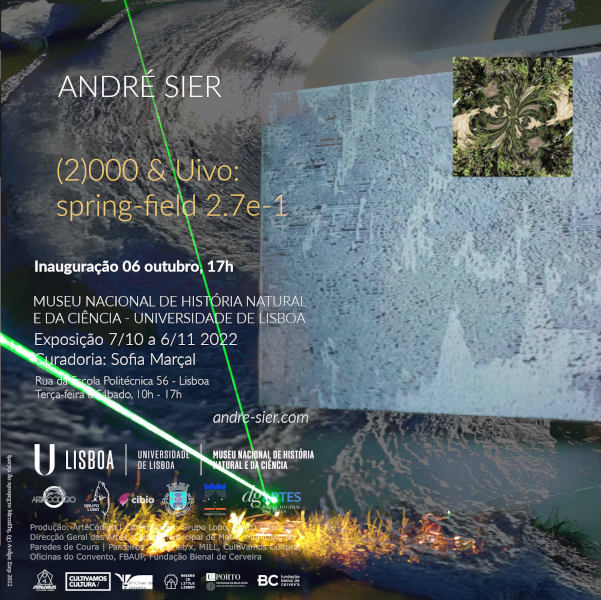
Solo exhibition by André Sier "(2)000 & Uivo - spring-field 2.7e-1" @ MUHNAC (National Museum of Natural History and Science)
Published on October 01, 2022 by artecódigo
os lobos em portugal Wolfspace Uivo Centro Recuperação do Lobo Ibérico Grupo Lobo CIBIO-UP andré sier ArteCódigo s373netx MUHNAC
17 min READ
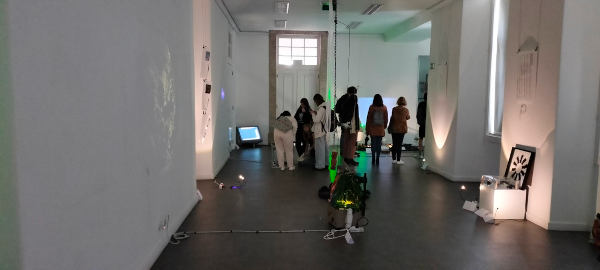
(2)000 & Uivo: spring-field 2.7e-1 @ MUHNAC
André Sier
Curadoria: Sofia Marçal
Sala Azul Museu Nacional de História Natural e da Ciência (MUHNAC)
Rua da Escola Politécnica, 6 - Lisboa
Inauguração: 6 outubro, 17h00 às 20h00
Finissage: 4 novembro, 18h00 às 20h00
Exposição de Arte e Ciência
7 de outubro a 6 novembro 2022. Terça a Domingo 10-17h
Visitas pelo artista a 6, 10 outubro, 4 novembro 19h
A ArteCódigo orgulha-se de apresentar a exposição individual do artista André Sier “(2)000 & Uivo: spring-field 2.7e-1” no MUHNAC (Museu Nacional de História Natural e Ciência hiperligação muhnac ), patente de Outubro a Novembro de 2022. Reúne uma selecção de trabalhos bio-electrónicos e videojogos mitológicos recentes, bem como obras nucleares da exposição lupina Uivo, do projecto “Os Lobos em Portugal”. O título da exposição referencia a obra de 1968 de Stanley Kubrick através de uma data uivante num campo primaveril, e debruça-se sobre uma criação metafísica bio-electrónica com obras construídas através de colaborações não-humanas como lobos, formigas, caracóis, bichos da conta e plantas variadas. Nesta página pode encontrar um texto alusivo e contextualizante à exposição pela curadora Sofia Marçal, uma descrição da exposição pelo artista, bem como a folha de sala que lista as obras e técnicas, complementada com imagens e vídeos recolhidos na mesma.
Still live, texto de Sofia Marçal, por ocasião da exposição “(2)000 & Uivo: spring-field 2.7e-1”.
Still live
A exposição (2)000 & Uivo: spring-field 2.7e-1 de André Sier reúne uma seleção de trabalhos recentes; instalações, esculturas, desenhos, fotografias, vídeos, e jogos da série wolfanddotcom. “O cidadão de nossa líquida sociedade moderna — e seus atuais sucessores são obrigados a amarrar um ao outro, por iniciativa, habilidades e dedicação próprias, os laços que porventura pretendam usar com o restante da humanidade. Desligados, precisam de se conectar… Nenhuma das conexões que venham a preencher a lacuna deixada pelos vínculos ausentes ou obsoletos tem, contudo, a garantia da permanência.”[1] A ideia de permanência e de conexão estão presentes nos trabalhos aqui expostos.
As peças Bioscope#3 e Bioscope#2 vêm na sequência da peça desenvolvida em 2020 pelo André Sier na residência artística efetuada na V2_ em Roterdão e no Museu Zer0 no Algarve. A ideia destas peças é magnificar com sistemas digitais ou analógicos miniecossistemas bio-electrónicos. Nestas peças cada um dos recipientes vai ter um pequeno ecossistema com formigas retiradas de uma paisagem local portuguesa. Na Bioscope#3 os boiões estão ligados entre si para que as formigas possam ser alimentadas e respirarem. O conceito é construir uma peça com animais vivo, ao mesmo projetando na parede as suas sombras através de radiação laser. Na peça Bioscope#2 o mesmo conceito é utilizado num retroprojetor onde formigas se passeiam entre desenhos. O que o artista tem estado a estudar com estes meios refratários, em termos de vidro e de plástico com as projeções laser, aparecem projetados padrões harmónicos dinâmicos. Chamam-se bioscópios porque há uma fonte de luz que passa por um ecossistema vivo que é projetada na parede.
Podemos considerar estes trabalhos como naturezas-mortas, género principalmente associado à pintura, mas aqui na exposição ganha o seu espaço específico com outra leitura, outro médium, num terreno híbrido entre o desenho e o vídeo numa pertença contemporaneidade numa perspectiva mais abrangente.
O artista continua a trabalhar MetaPh na série de fotografias expostas, numa seleção de 7 sobre papel vegetal. André Sier aplica processos fractais em fotografias de pormenores de natureza e de animais. Com este trabalho o artista pretende sublinhar a beleza matemática da Natureza, inspirado no livro Computational Beauty of Nature de G.W. Flake.
Honey Krater é semelhante às peças dos bioscópios, foi a primeira peça executada pelo artista com sistemas biológicos. Esta peça tem um sistema degenerativo de pequenos textos que são alusivos ao labirinto do Minotauro, com mini vozes robóticas produzidas pelos textos aleatórios gerados e que fazem vibrar a superfície da água onde o laser vai refratar e projectar na parede, como numa cidade labiríntica. “A cidade de quem passa sem entrar é uma, é outra para quem é aprisionado e não sai mais dali; uma é a cidade à qual se chega pela primeira vez, outra é a que se abandona para nunca mais retornar.”[2]
A peça Wolfmachine já esteve exposta em duas exposições, é composta por matéria morta recolhida do jardim do museu e é complementada com plantas vivas. Os lasers vão recriar uma performance mecânica de hora a hora, sobre a presença dos lobos em Portugal no século XX.
Ark é uma interpretação bio-electrónica da Arca de Noé, tem a ver com um miniecossistema aquático que está dentro do bidon de óleo protegido por um pneu usado sobre um fogão disfuncional, um pêndulo e uma corrente. Os visitantes através da luz do laser conseguem ver no interior da peça objectos reciclados de paisagens protegidas. A completar a peça um plástico, uma corrente e uma ‘Nau Catrineta’ que vão criar movimento.
As peças Wolf-totems, são esculturas muito frágeis que o artista começou por fazer do projecto dos lobos, inspiradas no trabalho delicado de Giacometti.
(2)000, inspira-se no filme do Kubrick, 2001: Odisseia no Espaço. O uivo que vai buscar o lado não humano. A peça vai ser um vídeo jogo onde humanos podem tentar jogar contra um miniecossistema bio-eletrónico, que lhes criam obstáculos através de interfaces disfuncionais.
O tema é um pretexto para o artista questionar a nossa vivência na Terra, do ponto de vista animal, estético e pós-humano. “O amante da vida universal entra assim na multidão como num imenso reservatório de electricidade. Pode-se também compará-lo, ele mesmo, a um espelho tão imenso quanto esta multidão; a um caleidoscópio dotado de consciência, que, em cada um dos seus movimentos, representa a vida múltipla e a graça móvel de todos os seus elementos. É um eu insaciável do não-eu que, a cada instante, o manifesta e o exprime em imagens mais vivas do que a própria vida, sempre instável e fugidia.”[3] Citando André Sier, “Na era neon-paleolítica, os detritos humanos transformam-se num luxo jogável, onde coisas bio-electrónicas surtem na paisagem primaveril, um quase osso infra-estrutural na forma de uma arca radiada a verde, onde a fauna e a flora e os componentes eletrónicos que sobraram, emergem, submergem, e vão treinando e aprendendo, através de videojogos mitológicos, uma realidade zero, e aproveitam para vender uns passinhos pelo espaço.“
Sofia Marçal
Referências:
[1] Zygmunt Bauman, in: Amor Líquido, Sobre a fragilidade dos laços humanos, p.9. [2] Italo Calvino, in: As cidades invisíveis, p.53. [3] Charles Baudelaire, in: O pintor da vida moderna, p.20.
(2)000 & Uivo: spring-field 2.7e-1, texto de André Sier
(2)000 & Uivo: spring-field 2.7e-1
Na era neon-paleolítica, os detritos humanos transformam-se num luxo jogável, onde coisas bio-electrónicas surtem na paisagem primaveril, um quase osso infra-estrutural na forma de uma arca radiada a verde, onde a fauna e a flora e os componentes electrónicos que sobraram, emergem, submergem, e vão treinando e aprendendo, através de videojogos mitológicos, uma realidade zero, e aproveitam para vender uns passinhos pelo espaço. A exposicão reúne igualmente uma selecção dos trabalhos lupinos de Uivo, uma exposição individual de artes electrónicas, com esculturas, desenhos, fotos, momentos estáticos fixados em suportes do fluxo da vida da série wolfanddotcom, série que reflecte e propõe artefactos estéticos para uma época imaginária pós e não-humana. Sendo o título desta exposição inspirado numa variação poética do filme “2001: A Space Odyssey” de Stanley Kubrick (1968), a exposição apresenta alguns exemplares de videojogos mitológicos e agregados bio-electrónicos recentes, bem como uma selecção dos trabalhos lupinos de Uivo, um projecto expositivo de artes electrónicas, com esculturas, desenhos, fotos, peças dinâmicas e momentos estáticos. A exposição conta com a Produção: ArteCódigo, Co-Produção: Grupo Lobo, CIBIO-UP, Apoio: Direcção Geral das Artes, Câmara Municipal de Mafra, Município de Paredes de Coura, Parceiros do projecto “Os Lobos em Portugal”: s373.net/x, MILL, Cultivamos Cultura, Oficinas do Convento, FBAUP, Fundação Bienal de Cerveira.
André Sier

(2)000 & Uivo - spring-field 2.7e-1 @ MUHNAC
André Sier
Curatorship: Sofia Marçal
Blue Room National Museum of Natural History and Science (MUHNAC)
Rua da Escola Politécnica, 6 - Lisboa
Inauguration: October 6, 5:00 pm to 8:00 pm
Finissage: November 4th, 6:00 pm to 8:00 pm
Art and Science Exhibition
7 October to 6 November 2022. Tuesday to Sunday 10am-5pm
Visits by the artist on 6, 10 October, 4 November 7pm
ArteCódigo is proud to present the solo exhibition by artist André Sier “(2)000 & Uivo: spring-field 2.7e-1” at MUHNAC (National Museum of Natural History and Science) hyperlink muhnac, open from October to November 2022. It brings together a selection of recent bio-electronic works and mythological video games, as well as core works from the lupine exhibition Uivo, from the project “Os Wolves in Portugal”. The title of the exhibition references Stanley Kubrick’s 1968 work through a howling date in a spring field, and focuses on a bio-electronic metaphysical creation with works constructed through non-human collaborations such as wolves, ants, snails, account and assorted plants. On this page you can find a text alluding to and contextualizing the exhibition by curator Sofia Marçal, a description of the exhibition by the artist, as well as the room sheet that lists the works and techniques, complemented with images and videos collected in it.
Still live, text by Sofia Marçal, on the occasion of the exhibition “(2)000 & Uivo: spring-field 2.7e-1”.
Still live
The exhibition (2)000 & Howl: spring-field 2.7e-1 by André Sier brings together a selection of recent works; installations, sculptures, drawings, photographs, videos, and games from the wolfanddotcom series. “The citizen of our liquid modern society — and his present successors are obliged to tie to each other, by their own initiative, skills and dedication, the bonds that they may intend to use with the rest of humanity. Disconnected, they need to connect… None of the connections that come to fill the gap left by absent or obsolete links are, however, guaranteed permanence.”[1] The idea of permanence and connection are present in the works shown here.
The pieces Bioscope#3 and Bioscope#2 follow on from the piece developed in 2020 by André Sier in the artistic residency held at V2_ in Rotterdam and at the Zer0 Museum in the Algarve. The idea of these pieces is to magnify bio-electronic mini-ecosystems with digital or analogue systems. In these pieces, each of the containers will have a small ecosystem with ants taken from a local Portuguese landscape. In the Bioscope#3 the jars are connected together so that the ants can be fed and breathe. The concept is to build a piece with live animals, at the same time projecting their shadows onto the wall using laser radiation. In the piece Bioscope#2 the same concept is used in an overhead projector where ants walk between drawings. What the artist has been studying with these refractory media, in terms of glass and plastic with laser projections, dynamic harmonic patterns appear projected. They are called bioscopes because there is a source of light passing through a living ecosystem that is projected onto the wall.
We can consider these works as still lifes, a genre mainly associated with painting, but here in the exhibition it gains its specific space with another reading, another medium, in a hybrid terrain between drawing and video in a contemporary belonging in a broader perspective.
The artist continues to work on MetaPh in the series of photographs on display, in a selection of 7 on tracing paper. André Sier applies fractal processes to photographs of details of nature and animals. With this work, the artist intends to underline the mathematical beauty of Nature, inspired by the book Computational Beauty of Nature by G.W. Flake.
Honey Krater is similar to the pieces of bioscopes, it was the first piece executed by the artist with biological systems. This piece has a degenerative system of small texts that are allusive to the labyrinth of the Minotaur, with mini robotic voices produced by the randomly generated texts that make the surface of the water vibrate where the laser will refract and project on the wall, as in a labyrinthine city. “The city of those who pass by without entering is one, it is another for those who are imprisoned and never leave; one is the city you arrive at for the first time, another is the one you abandon never to return.”[2]
The Wolfmachine piece has already been shown in two exhibitions, it is composed of dead material collected from the museum’s garden and is complemented with live plants. The lasers will recreate an hourly mechanical performance about the presence of wolves in Portugal in the 20th century.
Ark is a bio-electronic interpretation of Noah’s Ark, it has to do with a mini aquatic ecosystem that is inside the oil can protected by a used tire on a dysfunctional stove, a pendulum and a chain. Through the laser light, visitors can see objects recycled from protected landscapes inside the piece. Completing the piece is plastic, a chain and a ‘Nau Catrineta’ that will create movement.
The Wolf-totems pieces are very fragile sculptures that the artist started by making from the wolves project, inspired by the delicate work of Giacometti.
(2)000, inspired by the Kubrick film, 2001: A Space Odyssey. The howl that seeks out the non-human side. The piece will be a video game where humans can try to play against a bio-electronic mini-ecosystem, which create obstacles for them through dysfunctional interfaces.
The theme is a pretext for the artist to question our experience on Earth, from an animal, aesthetic and post-human point of view. “The lover of universal life thus enters the crowd like an immense reservoir of electricity. One can also compare him, himself, to a mirror as immense as this crowd; to a kaleidoscope endowed with consciousness, which, in each of its movements, represents the multiple life and moving grace of all its elements. It is an insatiable I of the not-I that, at every moment, manifests and expresses it in images more vivid than life itself, always unstable and elusive.”[3] Quoting André Sier, “In the neon-Paleolithic era, the human detritus becomes a playable luxury, where bio-electronic things flourish in the springtime landscape, an infrastructural quasi-bone in the form of a green radiated ark, where fauna and flora and electronic components, the only ones left, emerge, submerge, and train and learn, through mythological video games, a zero reality, and take the opportunity to sell a few steps through space.“
Sofia Marçal
References:
[1] Zygmunt Bauman, in: Liquid Love, On the fragility of human ties, p.9. [2] Italo Calvino, in: Invisible Cities, p.53. [3] Charles Baudelaire, in: The Painter of Modern Life, p.20.
(2)000 & Uivo: spring-field 2.7e-1, text by André Sier
(2)000 & Uivo: spring-field 2.7e-1
In the neon-Paleolithic era, human waste becomes a playable luxury, where bio-electronic things flourish in the spring landscape, an infrastructural bone almost in the form of a green radiated ark, where the fauna and flora and the components leftover electronics emerge, submerge, and train and learn, through mythological video games, a zero reality, and take the opportunity to sell a few steps along the space. The exhibition also brings together a selection of lupine works by Uivo, an individual exhibition of electronic arts, with sculptures, drawings, photos, static moments fixed on supports of the flow of life from the wolfanddotcom series, a series that reflects and proposes aesthetic artefacts for an imaginary era post and non-human. As the title of this exhibition is inspired by a poetic variation of the film “2001: A Space Odyssey” by Stanley Kubrick (1968), the exhibition presents some examples of mythological video games and recent bio-electronic aggregates, as well as a selection of lupine works by Uivo, an exhibition project of electronic arts, with sculptures, drawings, photos, dynamic pieces and static moments. The exhibition counts with Production: ArteCódigo, Co-Production: Grupo Lobo, CIBIO-UP, Support: General Directorate of Arts, Municipality of Mafra, Municipality of Paredes de Coura, Partners of the project “The Wolves in Portugal”: s373. net/x, MILL, Cultivamos Cultura, Oficinas do Convento, FBAUP, Fundação Bienal de Cerveira.
André Sier
folha de sala / exhibition map
000&Uivo-AndreSier-MUHNAC-folhadesala-exhibitionmap.jpg)
media da exposição / exhibition media



-gif20221019152134.gif)
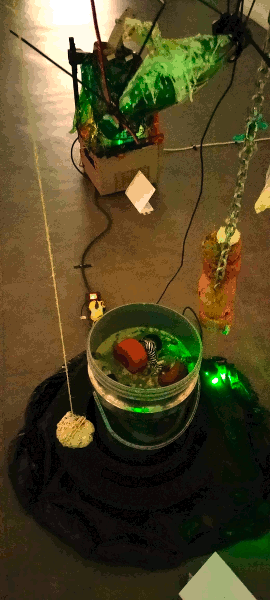


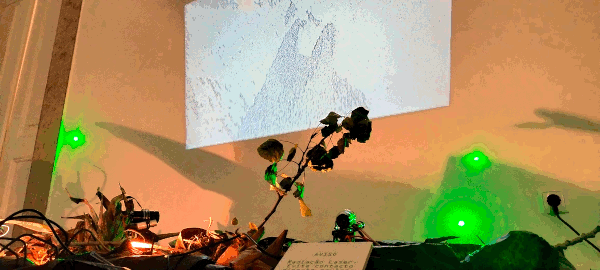


-play-20221106165103.gif)
-play-20221106115343.gif)
-20221019152107.jpg)
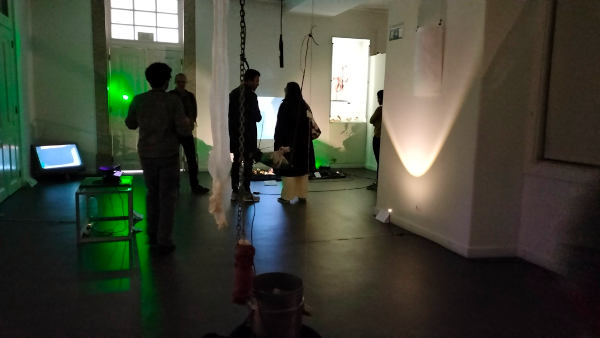

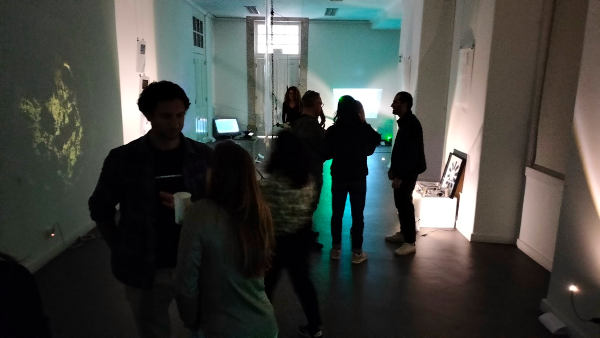

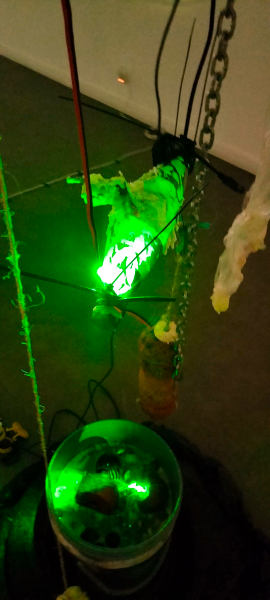

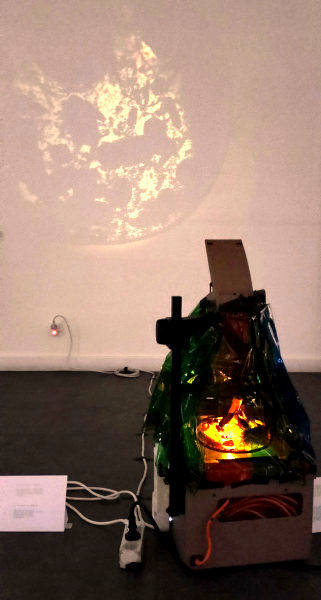
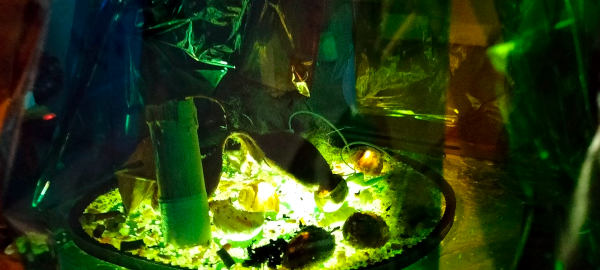



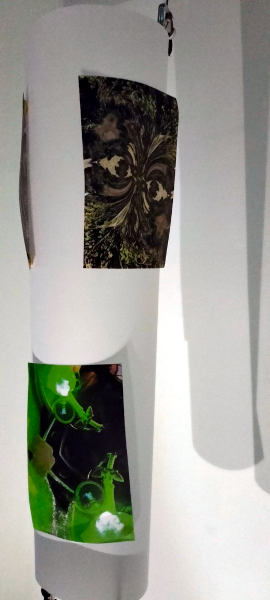
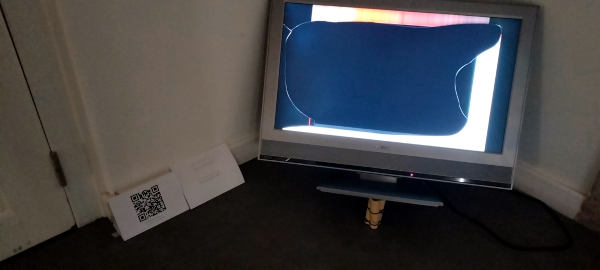

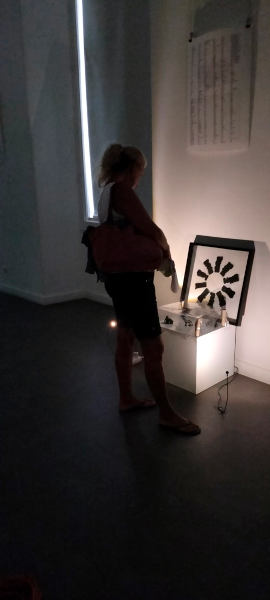




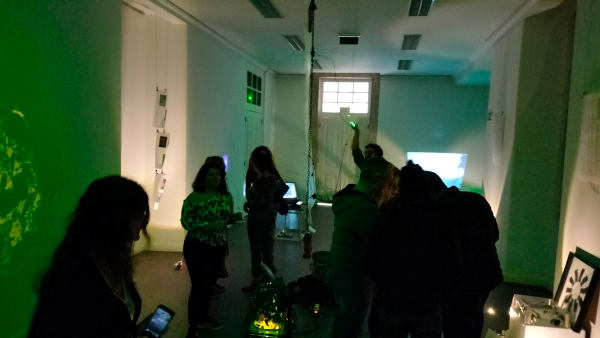

-play-20221106115343.gif)
